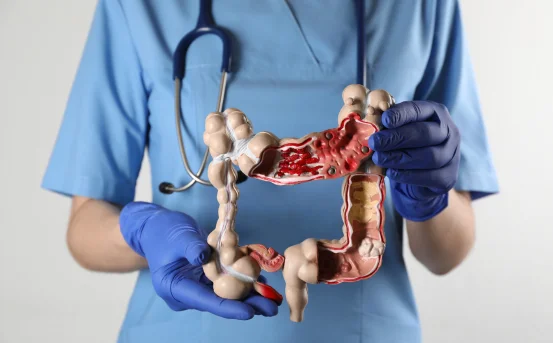Introduction
LASIK surgery (Laser-Assisted In Situ Keratomileusis) is one of the most popular vision correction procedures worldwide. It reshapes the cornea to correct refractive errors such as myopia, hyperopia, and astigmatism, offering freedom from glasses and contact lenses. Although LASIK is safe and has a high success rate, patients should understand what to expect during the recovery phase. Most of the symptoms after LASIK are temporary and part of the healing process. However, recognizing these symptoms can help patients manage their expectations and know when to seek medical advice.
The symptoms of Lasik surgery which patients may experience, when they occur, and how long they typically last. This information is crucial for anyone considering LASIK or currently recovering from the procedure.
Symptoms of LASIK Surgery
- Mild Discomfort or Eye Irritation
It is normal to experience a gritty or burning sensation in the eyes for the first 24 to 48 hours after LASIK surgery. Some patients describe it as having an eyelash or sand in the eye. This discomfort occurs because the corneal flap created during surgery needs time to heal and reattach securely. The sensation usually improves with prescribed lubricating eye drops and rest. Avoid rubbing the eyes during this period, as it can disturb the healing flap. - Blurry or Fluctuating Vision
Immediately after surgery, most patients notice improved vision, but it may not be perfectly clear right away. Blurriness or haziness is common for a few days to weeks as the eyes heal and adjust to the new cornea shape. Vision may fluctuate throughout the day, especially when the eyes are tired or dry. This is part of the normal recovery process and typically stabilizes within a few weeks. Patients should follow up regularly with their eye surgeon to monitor progress. - Dry Eyes
Dryness is one of the most common symptoms after LASIK. The procedure temporarily reduces tear production because corneal nerves responsible for triggering tears are affected during surgery. This can cause a dry, scratchy feeling, and some patients may notice watery eyes as a reflex response. Lubricating eye drops prescribed by the surgeon help relieve discomfort. In most cases, dry eye symptoms improve within three to six months, but some individuals may require longer-term care if pre-existing dryness was present before surgery. - Sensitivity to Light (Photophobia)
Many patients experience increased sensitivity to light in the days following LASIK. Bright sunlight, headlights, and even indoor lights may seem intense or uncomfortable. This occurs because the cornea is healing and the eye is adjusting to changes in its refractive surface. Wearing sunglasses during outdoor activities and limiting screen time can help minimize discomfort. Light sensitivity usually subsides as healing progresses, typically within a few weeks. - Halos and Glare Around Lights
Seeing halos or starbursts around lights, especially at night, is another common symptom during the early recovery period. These visual disturbances happen because the corneal surface is still healing, and the eye may temporarily scatter light unevenly. Patients with large pupils or high prescriptions before surgery are more likely to notice these effects. Most cases improve over several weeks or months, although some people may experience mild halos long-term, especially in low-light conditions. - Temporary Redness or Blood Spots
Small red patches on the white part of the eye, known as subconjunctival hemorrhages, are common after LASIK surgery. They occur when tiny blood vessels break during suction applied to create the corneal flap. These spots look alarming but are painless and harmless, usually resolving on their own within one to two weeks without treatment. - Eye Fatigue and Strain
After LASIK, the eyes are in a healing phase and can tire easily. Activities such as reading, using a computer, or prolonged screen time may cause eye strain or fatigue. Patients should take frequent breaks and follow the 20-20-20 rule every 20 minutes, look at something 20 feet away for 20 seconds. This helps reduce strain and supports a more comfortable recovery. - Occasional Headaches
Some patients experience mild headaches during the first few days after LASIK, mainly due to changes in focusing and eye strain as vision stabilizes. These headaches are generally short-lived and respond well to rest and over-the-counter pain relievers. If headaches persist or worsen, it is essential to consult the eye surgery to rule out any complications. - Difficulty with Night Vision
Night driving may be challenging in the initial recovery phase because of glare, halos, or reduced contrast sensitivity. This is a temporary effect as the cornea heals and the brain adapts to new visual input. Patients are advised to avoid driving at night until they feel confident in their vision. In most cases, night vision improves significantly within a few months. - Rare but Serious Symptoms
While most symptoms are mild and temporary, patients should be alert for warning signs of complications. Severe pain, sudden vision loss, increasing redness, or discharge may indicate infection or flap-related issues. These are rare but require immediate medical attention to prevent long-term damage.
Conclusion
LASIK surgery is highly effective for vision correction, but like any medical procedure, it comes with a recovery period during which certain symptoms are expected. Mild discomfort, dryness, fluctuating vision, and temporary glare or halos are common and usually resolve with proper care and time. Understanding these symptoms helps patients remain calm and compliant with post-surgery instructions, leading to a smoother recovery and better outcomes.
If you experience severe pain, worsening vision, or any unusual symptoms after LASIK, contact your eye surgeon immediately. Regular follow-up visits are crucial to ensure proper healing and to address concerns early. With advancements in technology and skilled surgical techniques, LASIK continues to be one of the safest and most rewarding procedures for achieving clear, natural vision without dependency on glasses or contact lenses.























